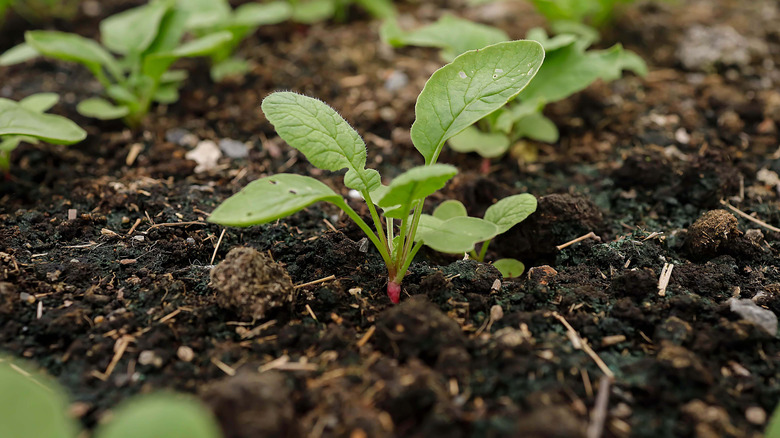
Thanakit Kaewcha/Shutterstock
We may receive a commission on purchases made from links.
You might have seen a recent TikTok video by Solarpunkfarmer, which drew attention to a Korean gardening technique that has been catching on. The video creator described a recipe for a liquid solution intended to supercharge soil. He listed ingredients, like baked potatoes and leaf mold, that may have left viewers wondering — but the TikTokker said he had great results with the end product, which he called “better than compost tea”. The Korean practice is called the JADAM Soil Management Method, and the liquid recipe is just one part of the technique.
Youngsang Cho of South Korea introduced the JADAM Soil Management Method in 1991 with the aim of making farmers more self-sufficient in an ultra-low-cost way. The method features five “core inputs” — A microbial soil solution, a liquid fertilizer, a wetting agent, a mineral solution, and a herbal solution for pest control — but these inputs are neither patented nor sold commercially. JADAM’s self-sufficiency and low-cost principles support a DIY approach to the formulations using local materials. For example, the JADAM Microorganism Solution (JMS) is made using water, starch (baked potatoes), sea salt, and leaf mold to generate and feed microorganisms that will enrich the soil. The benefits of using leaf mold align with the traditional practice of including this material as one of the ways to amend soil in fall for a healthy garden next spring.
According to the JADAM principles, the composition of microorganisms, organic matter, and minerals in soil should mimic what happens naturally on the forest floor. In addition, soil is amended with minerals, such as rock powders mixed with water, or by fermenting humus, leaf mold, grass, and water in a container. The JADAM method also disdains the practice of adjusting soil pH, asserting that appropriate pH can be maintained through natural microbial processes.
The JADAM method focuses on creating healthy soil for thriving plants
Practitioners of JADAM find traditional composting too complicated. Instead of figuring out green-to-brown ratios, turning the pile, and fussing with temperature, aeration, and moisture, followers of JADAM simply mix compost ingredients in the fall and place the mix right on the ground, along with some JADAM microorganism solution, which helps to stimulate the breakdown of the organics into the soil. The JADAM movement also supports cover crops functioning as green manure, just as traditional gardeners are encouraged to grow things like alfalfa or clover, to create healthier soil in the yard and garden. Cost is the main drawback to traditional pesticides, say JADAM proponents, who encourage natural pesticides with ingredients like herbs, peppers, and other plants, not unlike the common kitchen ingredients you can use for DIY pest control. The natural pesticide is used in conjunction with the wetting agent, a surfactant that is said to boost the penetration and effectiveness of the natural pesticide.
JADAM seeks to empower farmers and gardeners and encourages knowledge sharing. The practice discourages reliance on chemicals and commercial products and seeks to cut costs. Above all, its focus on rejuvenating soil makes it worth considering to ensure healthy plants and a thriving garden. Gardeners who are interested in learning more about this method, especially those who are already somewhat familiar with the concepts of permaculture, may like to purchase the book “JADAM Oganic Farming” written by Youngsan Cho (and translated into English).


Comments are closed.